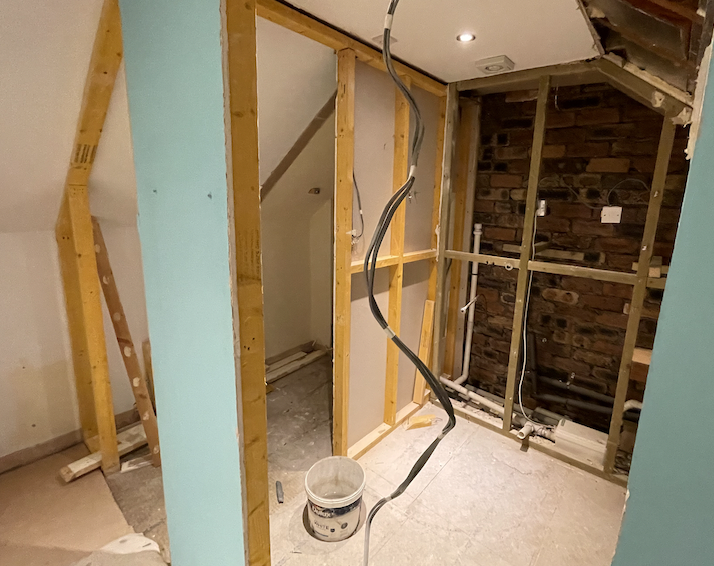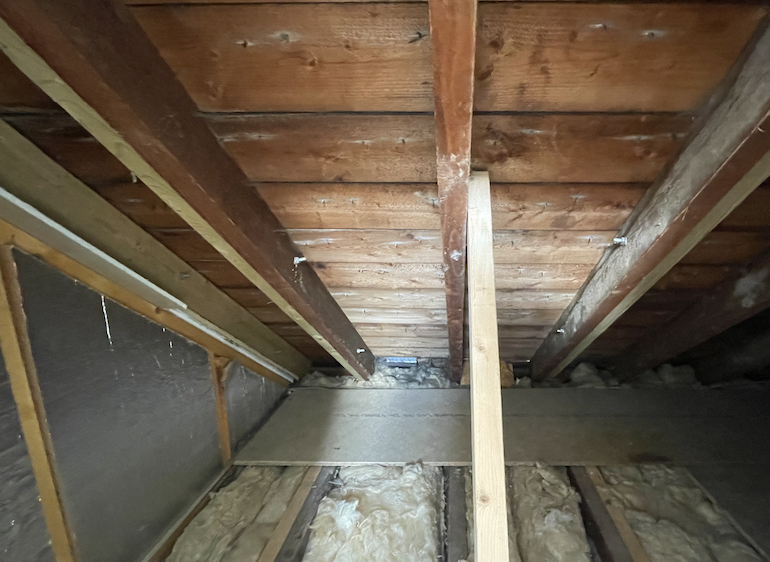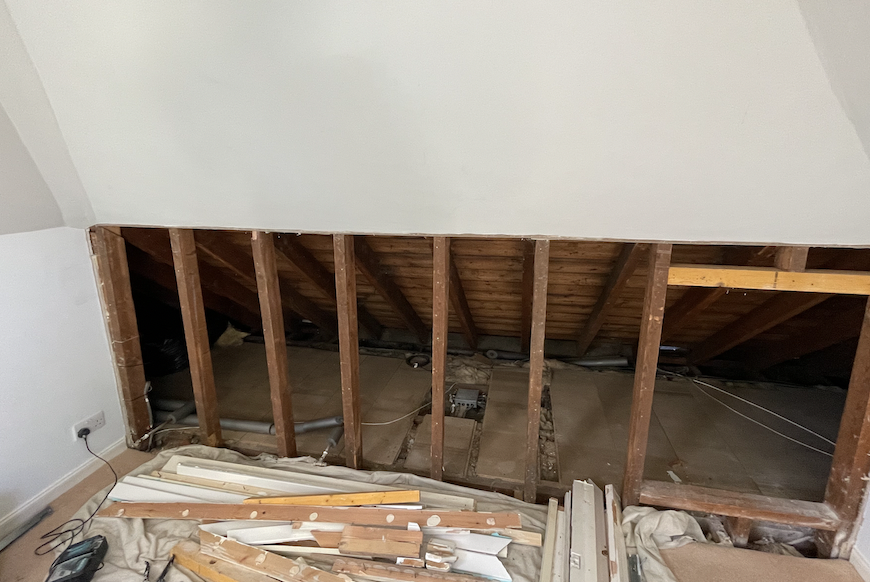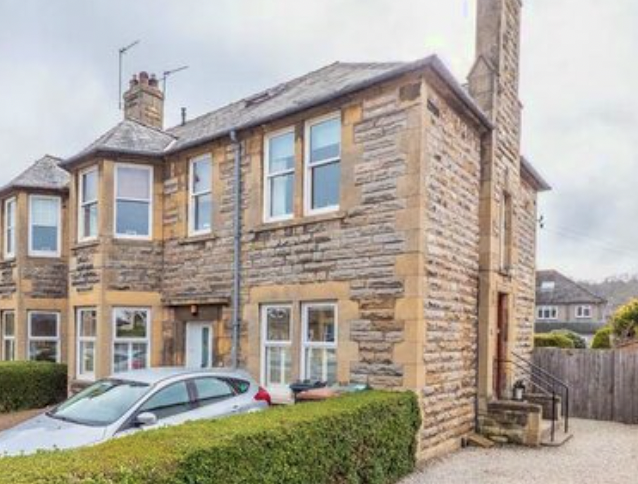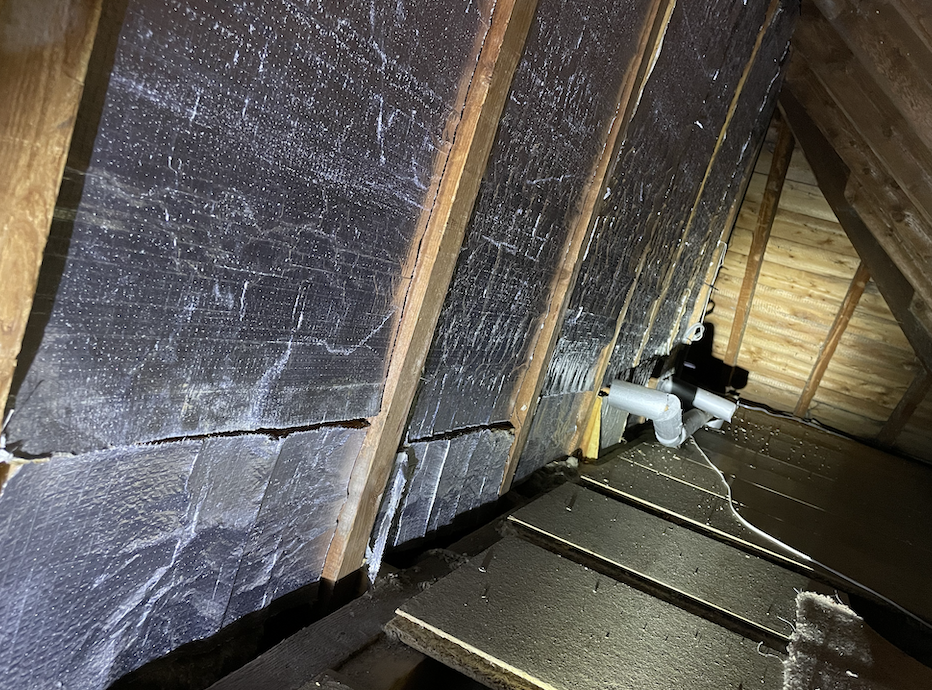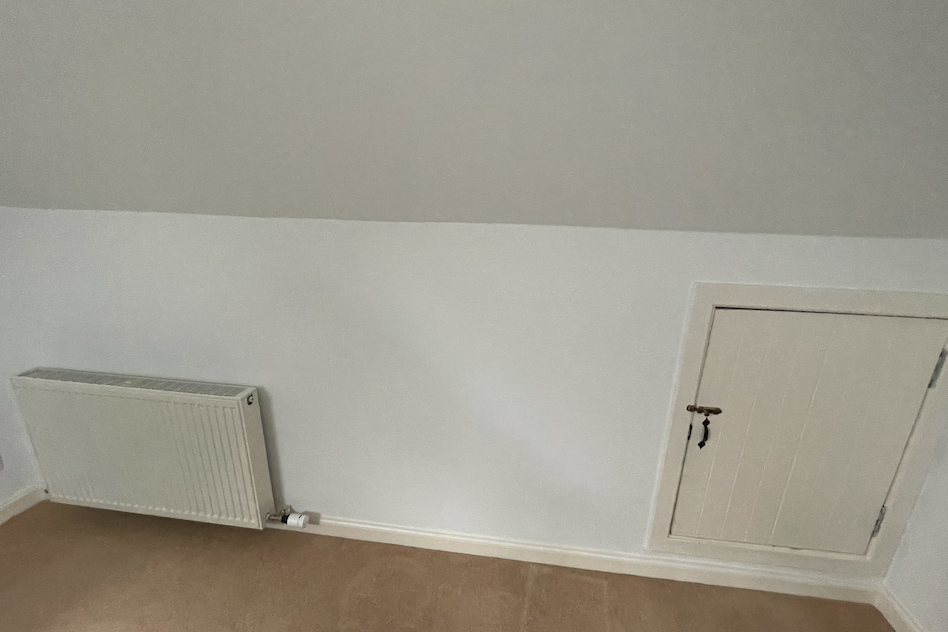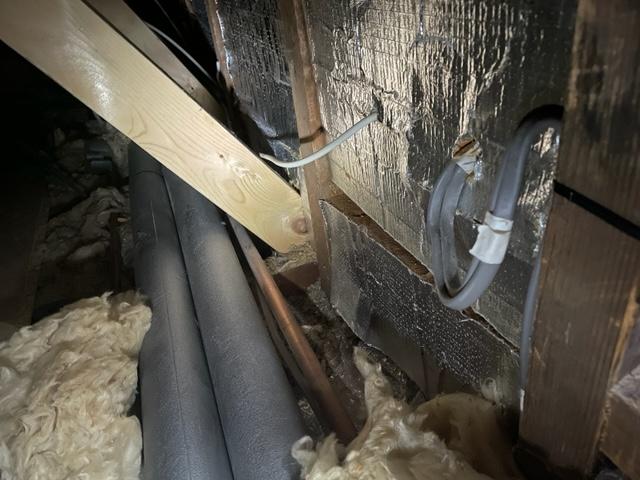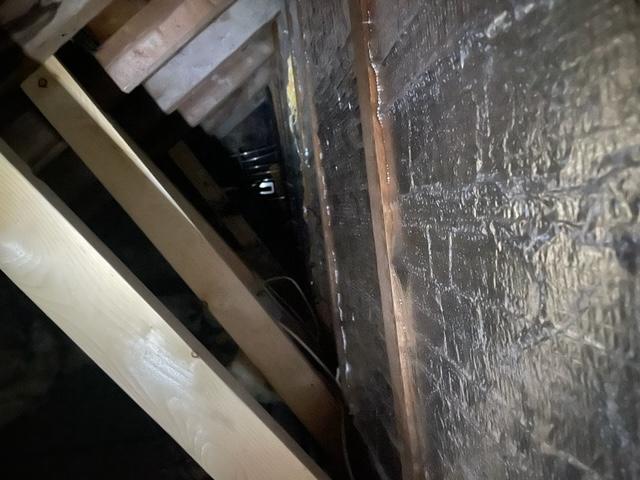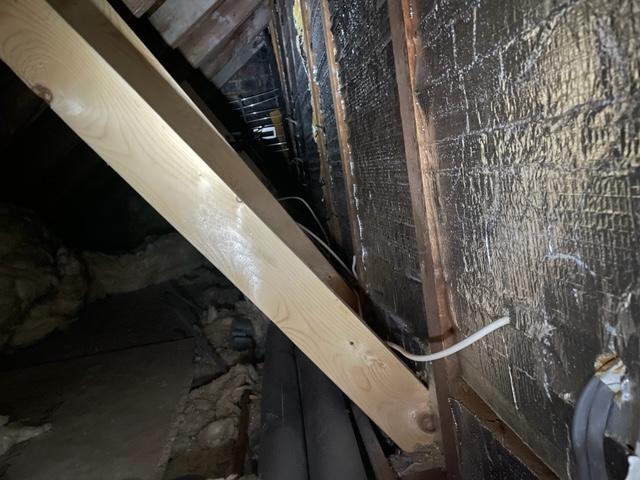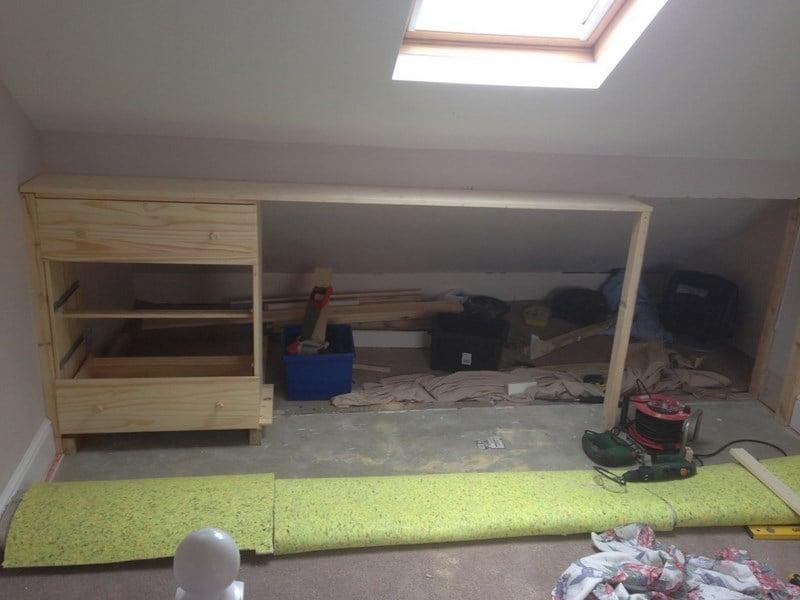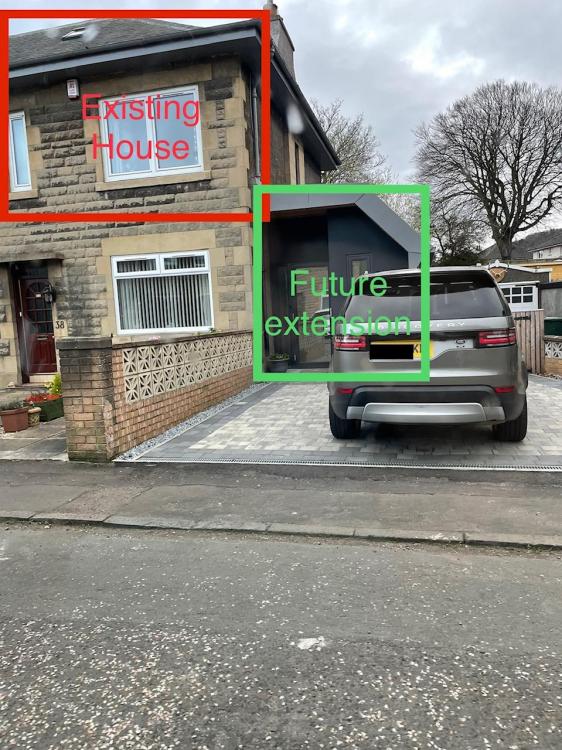
Ramaya
Members-
Posts
19 -
Joined
-
Last visited
Ramaya's Achievements

Member (3/5)
0
Reputation
-
Hi, I am looking at potentially installing insulated plasterboard on outside facing walls. I have two rooms on the first floor that are exposed on 2 sides and are by far the coldest rooms in the house. I am about to remove the carpets and install new flooring, sand/plaster were required and refinish. I am wondering if there is a good time to potentially install some insulated plasterboard on the outside facing walls of each room. I have an unfilled cavity wall Stone (outside) - Gap - Brick wall (inside), is there any reason I should not do this? Anything in particular I should be mindful off?
- 1 reply
-
- insulation
- old house
- (and 4 more)
-
1930's Upper Villa Thermal Improvement Suggestion
Ramaya replied to Ramaya's topic in Heat Insulation
Insulation between the rafters is 80mm PIR followed by 25mm PIR sheet running perpendicular to the rafters followed by plaster board. No Vapour barrier. STUD walls are the same. I can easily go behind the STUD walls and feel the gaps with foam. The sloped spaces is a different story as it needs to be fully stripped out. Rafters are 130mm deep so keeping 50mm above for airflow. I have ripped the bathroom off as I am planning on installing a new Velux (photos below). When i redo the bathroom I am thinking of using Vapour barrier around it. Also will create some cupboards into the eaves by introducing a new STUD wall at 900mm height from the rafters and taking 3 STUDS out of the original one essentially creating the same gap as the existing door. This will be insulated properly. 100mm PIR, 25mm PIR + Vapour barrier before plasterboard. I'm trying to be realistic with what I can achieve.. -
1930's Upper Villa Thermal Improvement Suggestion
Ramaya replied to Ramaya's topic in Heat Insulation
-
1930's Upper Villa Thermal Improvement Suggestion
Ramaya replied to Ramaya's topic in Heat Insulation
Any ideas ? -
Recently moved in a 1930's Upper Villa with a converted Attic (c. 2006). The size of the property is about 96m2 and is located in Edinburgh. Cavity wall stone exterior. I am looking on some advice on how to improve the thermal efficiency gradually as I go through renovating different areas of the property. It is a long term project. Current situation: - Attic conversion is insulated behind the stud walls and inside the eaves it is insulated in the floor area rather than the pitched room (wool on the floor area, kingspan between the studs) . No breathable membrane has been installed as far as I'm aware. - 3 fire places in total 2 of which have been sealed with vents at the bottom (not sure if these can be removed), 3rd has a gas fire installed into it. - A mixture of sliding and reversible old double glazed windows with pour seals. In my first steps I am going to remodel the Attic, mainly cosmetic but I can potentially look into more insulation if needed. I am also considering replacing all the windows. Would really appreciate some advice from the experts?
-
Renovation, Which System To Go For? Advice.
Ramaya replied to Ramaya's topic in Central Heating (Radiators)
Might sound very novice but how I go about making the place airtight? First in the 1st floor and afterwards in the attic. -
Renovation, Which System To Go For? Advice.
Ramaya replied to Ramaya's topic in Central Heating (Radiators)
I am on the first floor + attic. If I do something would be at the cavity walls. I need to do more research, i didn't know you could put insulation in them. -
Eaves Storage Drawers - Structural Question
Ramaya replied to Ramaya's topic in Lofts, Dormers & Loft Conversions
Hi Dave yes ofc the insulated envelope will move out and essentially refit the plaster boards at the back side of the Eaves, if that makes sense. I am also looking at a MVHR installation at the eaves does that section need to be insulated too? can the pipes run around the uninsulated part of the eaves space to route them around the flat? Thanks- 2 replies
-
- eaves
- eaves storage
-
(and 4 more)
Tagged with:
-
Hi, I am looking for some initial advice before I involve a structural engineer. I am looking to take advantage of the eaves storage space and create drawers that go into the eaves instead of reducing the attic space. I have attached a few photos of the roof construction and my questions are the following: - The angled 4'' by 2'' are definitely structural. So can not be touched. - Then there are some vertical 2'' by 2'' that essentially form the frame for the internal walls that the plasterboard is nailed onto. Can these be removed? Example of what I am looking to achieve. Eaves space
- 2 replies
-
- eaves
- eaves storage
-
(and 4 more)
Tagged with:
-
Renovation, Which System To Go For? Advice.
Ramaya replied to Ramaya's topic in Central Heating (Radiators)
I am guessing you are suggesting dMEV because of the potential high cost of a MVHR system installation. Not much I can do in terms of insulation the building is a a cavity wall construction with an external stone skin. I can not cover the external walls of the building. The loft is the warmest room in the property converted in 2006 and insulated. The superflow is interesting I would have a look at it. -
We have very recently (2-weeks) moved to a new property, 1930's upper Villa with a loft conversion (no dormers), about 100m3, 3 bed 1 bath 1 ensuite. I am planning a what i try to call soft refurbishment and I would like to try and future proof the place in every step I take. The house has an ageing combi boiler installed circa 2006 which works but every so often throws an ignition error so i know it is on its way out.. I am looking for what system would be best to go for for my situation considering the following facts: - Combi Boiler at the moment is located in the Attic which is also the master bedroom, I would like something quiet. - I have installed a Drayton Wiser as my wife works from home and we would like to control individual room temperatures. - A system that would be able to cater for a future ground floor side extension which will add 1 bed 1 ensuite, 3 rads in total. Attached photo of similar property. General comments the house is much colder on the first floor than what I anticipated, I'm guessing this is mainly due to 3 sides of it being exposed to the elements and also the ageing windows (already planning to replace all of them). Is a system boiler with an UVC the best option? Replace with another Combi System? Thanks,
-
Help me understand /m2 pricing better.
Ramaya replied to Ramaya's topic in General Self Build & DIY Discussion
My intention would be to bring the building to water tight shell and only finish the internals of the ground floor then slowly self-build the second floor as and when funds allow it. Power float finished floor on the ground. Velfac windows or similar, budget £15-20k Foundations/Groundwork £30-40k Shell build £30k (ICF Assembly) Internal structural flooring for first floor £10k Structural roof works £15k ICF Formwork £20-30k I work in construction albeit in infrastructure still I consider myself clueless in terms of a self-build home. However, I do think I can reduce my groundwork/foundations costs by self managing that stage of the job. I can do all the setting out and surveying myself. And possibly work with trades for putting up the shell ICF's. However, I can not work at the project during the week days. -
I'm trying to understand the economics of a self build better and want to understand how to better predict £/m2 pricing. Obviously the complexity, design features, material choices will have an immense impact on price but for the sake of this arguments let me simplify it to a cost for a watertight shell (finished render exterior & doors and windows). What would be more expensive: A 200m2 single storey house or A 200m2 1.75 storey dwelling with a ground floor area of 100m2. To me the answer is obvious the first will be more expensive due to the larger foundations roof etc. However, by how much? I am looking at a plot that has planning permission for a rectangular 4 bed 1.75 dwelling (200m2 roughly) and I'm straggling to understand how to price it correctly per m2. Location: outside Edinburgh by-pass, preferred construction method: ICF. I've budgeted about £110 - 130k so far for a water tight shell with me working PM'ing a contractor to reach that stage but maybe i'm day dreaming.


